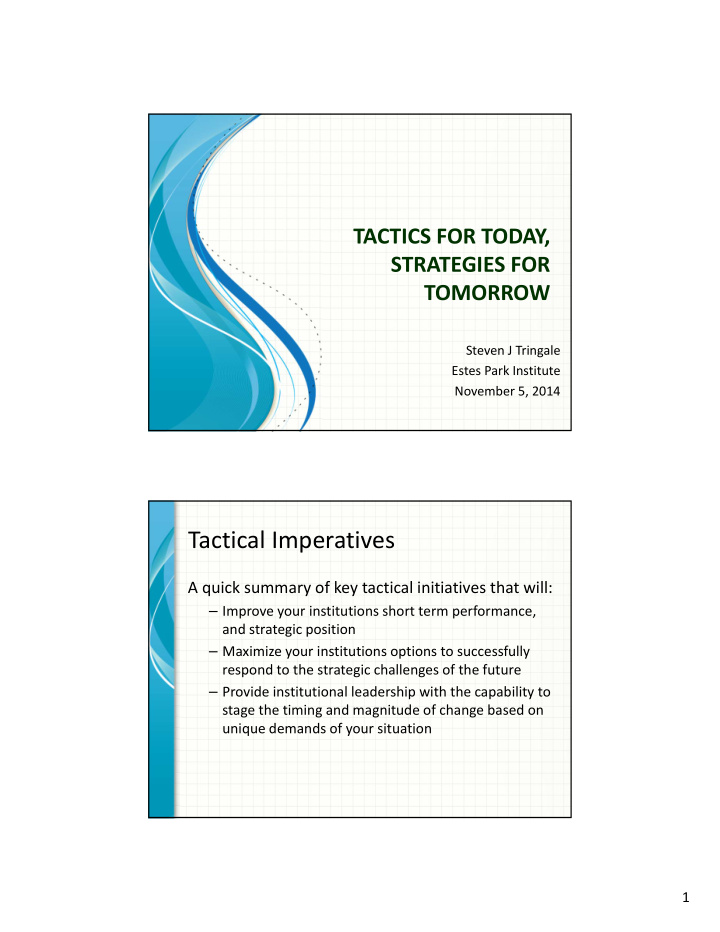



TACTICS FOR TODAY, STRATEGIES FOR TOMORROW Steven J Tringale Estes Park Institute November 5, 2014 Tactical Imperatives A quick summary of key tactical initiatives that will: – Improve your institutions short term performance, and strategic position – Maximize your institutions options to successfully respond to the strategic challenges of the future – Provide institutional leadership with the capability to stage the timing and magnitude of change based on unique demands of your situation 1
Improve Hospital Physician Alignment • Increase opportunities and expectations for formal and informal communications, both listening sessions and strategic sessions with – Executive leadership – Board • Improve service culture toward physicians – Practice Support – Recognize Changing Life Style Expectations • Activate or Develop Physician Hospital Organizations – Shared Governance Embrace the Transparency Movement • Link transparency requirements to a system wide focus on quality and safety • Use cost, quality and outcomes data to strengthen institutional support among: – Community and Business Leaders – Physicians – Insurers – Government as regulators and payers 2
Establish a Renewed Commitment to Community Based Medicine • Position Hospital and Share Vision of Institution as Epicenter of Community Care System – Establish programs which extend your brand into the community, i.e. care coordination network – Strengthen ties with high performing post acute providers (shared vision of future) – Extend transparency expectations into post acute care and social support environment Refocus Capital Investment Policy • Capital planning by necessity must be driven strategy of future. This is where the tactics of today and strategies of tomorrow have the most immediate convergence – IT capability, core operating systems, EMRs, data warehousing, analytics (big data), and connectivity (anticipated) with community based providers – Rigorous review with high ROI expectations for new technology and physical plant 3
Increase Patient Engagement Activities • Adopt role of “navigator” guiding patients through: – Changes and options for care based on evidence based medicine – Changes and options for health insurance coverage available to patient and the consequences of those choices – Begin process of identifying preferred referral and network partners whenever possible Improve Public and Private Payer Relationships • Schedule regular interactions at the executive level, outside of the contract negotiation process – Broaden agenda beyond rate issues – Exchange views on system evolution – “Market” your system, as the system of choice in the region – Develop a state of the institution presentation – Look for opportunity to be early adopter of “reasonable” new programs 4
Successful Implementation of these tactics will position institution for success New Partnership Models Complexity Global The debate is not whether Budget the health care delivery Models and financing system will change, the question is Performance direction and pace of Based change Contracts Time Spent Q UESTIONS ? 5
Recommend
More recommend